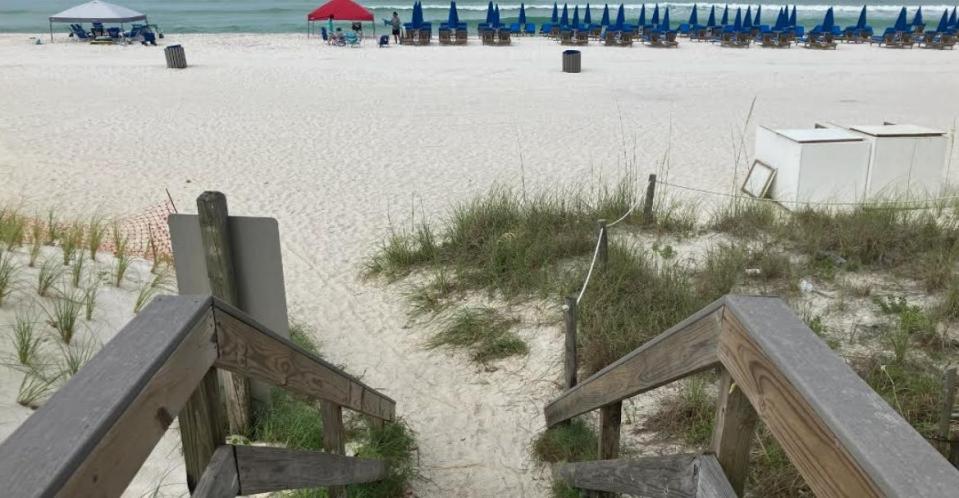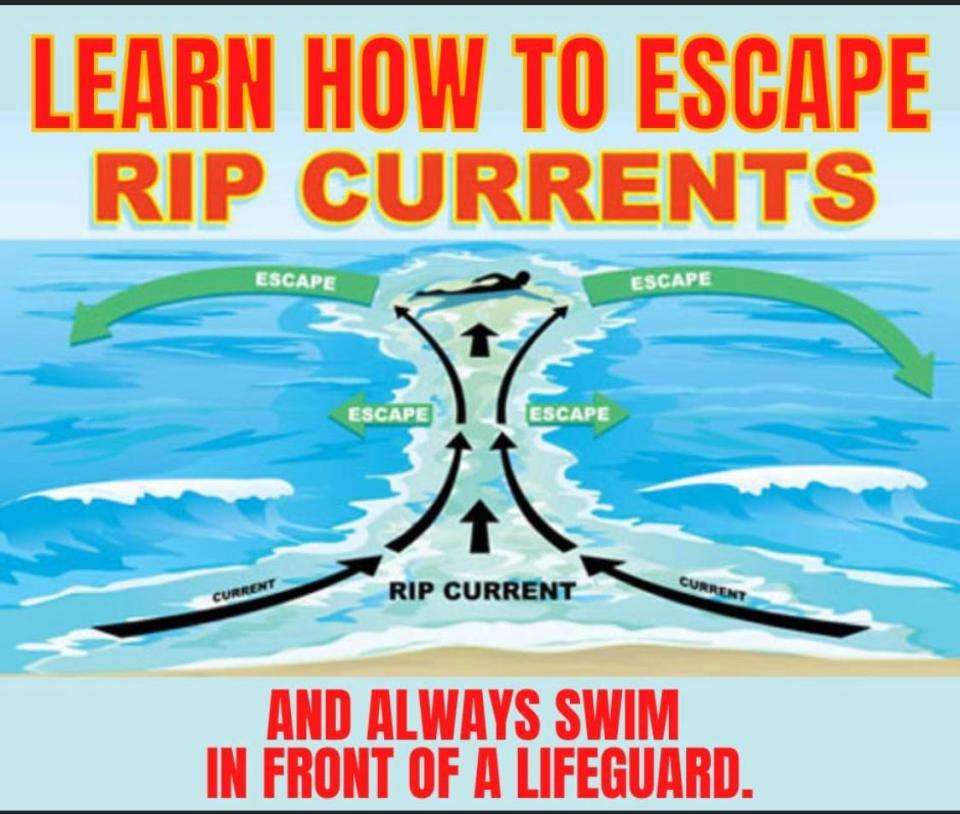Three young men from Alabama have drowned in the Gulf of Mexico in Bay County, the sheriff’s office announced.
According to a Facebook post from the agency, the men, whose ages and hometowns have not yet been listed, arrived in Bay County Friday evening and went swimming.
The sheriff’s office said it received a call at 8:11 p.m. Friday about three distressed swimmers behind Watercress Condominiums, 6201 Thomas Drive. The agency, along with the U.S. Coast Guard, Bay County Emergency Services and the Florida Fish and Wildlife Conservation Commission, began rescue efforts.
Related news: 3 Panama City Beach drownings bring Florida total to 5 this week. How to survive rip currents
Bay and surrounding counties have been under a rip current warning this week. Single red flags were flying Friday, which means high hazard: high surf and/or strong currents.
The swimmers were found one by one and received medical care.
Another rip current warning
Just after 3 a.m. Saturday, the National Weather Service issued a statement saying dangerous rip currents are expected through 4 a.m. Monday at Bay, Walton, Gulf and Franklin County beaches.
“Rip currents can sweep even the best swimmers away from shore into deeper water,” the statement says. “Beachgoers are urged to be aware of what color beach flags are flying. Reminder: double red means that the water is closed to the public, but the beach remains open.”
Bay County is under single red flags today, which means high hazard: high surf and/or strong currents.
Click here for the latest weather warnings.
— Jim Ross
Public Beach Access No. 12

The Friday night search and rescue operation began at sunset Friday and lasted into the night. The conditions were relatively calm Saturday morning.
— Tyler Orsburn
What is the best thing to do in a rip current?


By far the most important thing to do is to stay calm, and even try to relax. They can be scary, but rip currents will only pull you along, they won’t pull you under the water. The biggest danger is tiring yourself out.
Don’t panic or thrash about. Don’t bother trying to fight the current.
You may be able to get out of the current by swimming with it parallel to the shore (or just floating or treading water) until it fades or circulates back to shore, and then you can swim to the beach.
You also can try swimming with the current toward breaking waves, where you may be able to swim for shore.
If you can’t reach the shore or you’re being pulled farther out to sea, or you’re getting tired, draw attention to yourself by waving or shouting for help.
— Lianna Norman and C.A. Bridges
What is the difference between a riptide and a rip current?
Rip currents have also been called runouts, but they’re not the same as rip tides or undertow although the terms often get confused.
+ Rip currents: Strong offshore currents that run along the shoreline or back out to sea.
+ Rip tides: A powerful current caused by the tide pulling water through an inlet and the mouths of estuaries, embayments, and harbors. Also known as tidal jets.
+ Undertow: When a wave breaks, a lot of water and sand is pulled rapidly under the surface back into the next breaking wave. Unprepared swimmers or small children can easily be tumbled around in an undertow but it only goes a short distance and only for a moment or so.
— Lianna Norman and C.A. Bridges
Social media reactions to the three drownings
As of 7:15 a.m. Saturday, the Bay County Sheriff’s Office Facebook post about the drownings had drawn 798 reactions and 266 comments. Many people expressed sympathy and offered prayers for the family and thanks for the first responders.
— Jim Ross
How many people die in rip currents?
Rip currents are habitual hazards of Florida beaches. Tens of thousands are rescued from rip currents in the U.S, every year and they make up 81.9% of all surf beach rescues, according to a 2018 report from the Natural Hazards and Earth System Sciences on lifeguard data.
The United States Lifesaving Association (USLA) has estimated that over 100 people drown every year in this country due to rip currents.
— Lianna Norman and C.A. Bridges
What happens in a rip current?
You’re swimming along, enjoying the cool ocean water off a Florida beach, when suddenly you get knocked off your feet and feel like you’re in a rushing underwater river. You try swimming to shore but the current has you in its grip, pulling you farther out to sea.
Eventually, the current will dissipate, but not before it drags you along no matter how strong a swimmer you are. Fortunately, they’re not difficult to deal with if you keep your head.
— Lianna Norman and C.A. Bridges
Bay County Sheriff Tommy Ford’s statement
Bay County Sheriff Tommy Ford released this statement on Facebook late Friday: “It is with profound sadness that we announce all three young men that entered the water around 8PM today and became distressed have passed away. Our thoughts and prayers are with their families.”
— Jim Ross
U.S. Coast Guard cautions people about rip currents
Details of what happened Friday are still emerging. But in a Facebook post, the U.S. Coast Guard Station in Panama City, which was among the agencies aiding in the search and rescue, cautioned people about rip currents.
“All first responder agencies urge locals and visitors to exercise caution in the Gulf waters,” the statement says. “Rip currents pop up unexpectedly and can happen on even the nicest days. An ounce of prevention is worth a pound of cure. Be safe everyone. Thank you for the well wishes and support. “Our hearts and prayers go out to all those involved and their families.”
— Jim Ross
What are rip currents?
Rip currents are powerful, concentrated channels of water flowing quickly away from shore, most often found at low spots or breaks in the sandbar and near structures such as jetties and piers.
Rip currents form when incoming waves create an underwater sandbar. The waves push more water between the sandbar and the shore until it collapses and the water rushes back to the sea through a narrow gap, where it starts to spread out. But they can be difficult to see when you’re in the water as the ocean over them can still be smooth.
Earlier this year: One tourist drowns off the coast of Panama City Beach, first local beach drowning of 2024
Rip currents often form during or after stormy weather but can form on bright, sunny days just as easily since the weather isn’t really what’s causing them. Rip currents can be found at any beach with waves, at any time.
— Lianna Norman and C.A. Bridges
This article originally appeared on Ocala Star-Banner: Florida drownings: 3 swimmers die near Panama City Beach
Source Agencies


